Ancient temples, the Knights Templar and chocolate. Just a few of the things we came across during our time in the Slovenian region of Bela Krajina. An eclectic mix to be sure. Yet throw in a few hilltop churches, a bit of bread making and a whole load of bees then you’ve got quite a buzz.
We were staying for a few days at the Big Berry countryside retreat on the River Kolpa. Our guide and interpreter Vit declared the best way to explore would be by meeting the locals and visiting hidden gems known only to those who live there. It sounded like a plan!
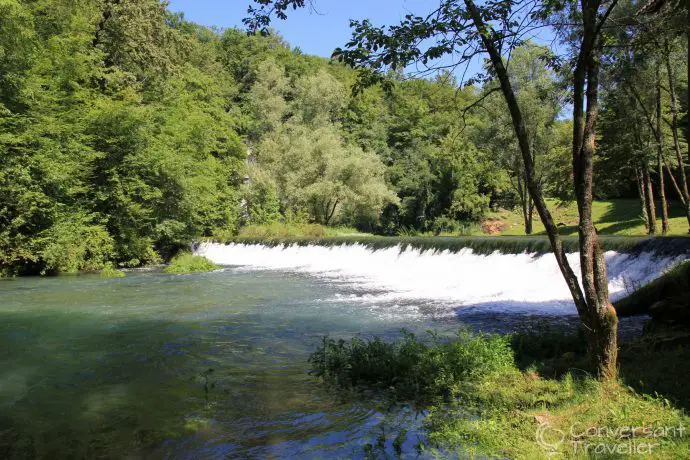
Bela Krajina is a rural agricultural region skirting the Croatian border, packed full of quaint farmsteads, traditional hay barns and fields of corn. The rolling hills are carpeted with vineyards that would give even Tuscany a run for it’s money, and there are more churches than we could ever hope to count. The area is delightfully untouched by mass tourism and visitors are still a curiosity, albeit a very welcome one. It was wonderful to be invited into the lives of the local people who were, without exception, genuinely friendly and eager to share a part of their culture with us.
But first, what is there to see?
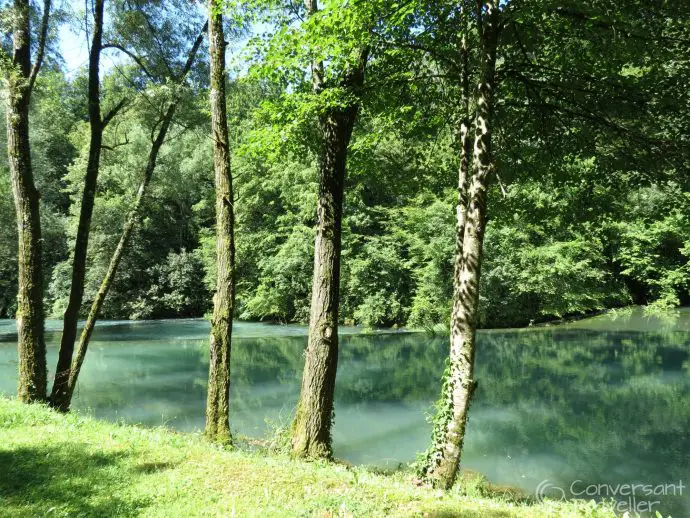
Natural Sights of Bela Krajina
Source of the River Krupa
Walking down through the woods to the source of the Krupa river was like stepping into a fairytale. Dragonflies lazily skimmed the surface of the emerald pool that was bubbling out from beneath the perfectly manicured limestone cliffs towering high above. The whole area is karst, which makes for some great river and cave viewing! The Krupa is only a couple of kilometres long but a more magical stretch of tranquil water you won’t find, I’m sure.
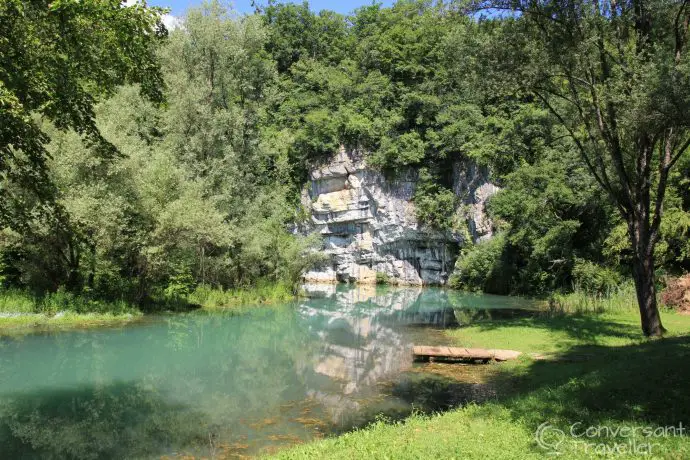
There was of course a hay rack at the top of the hill overlooking the old mill and the weir. Traditional wooden hay racks are dotted everywhere throughout Slovenia, it almost seems like every house has one.
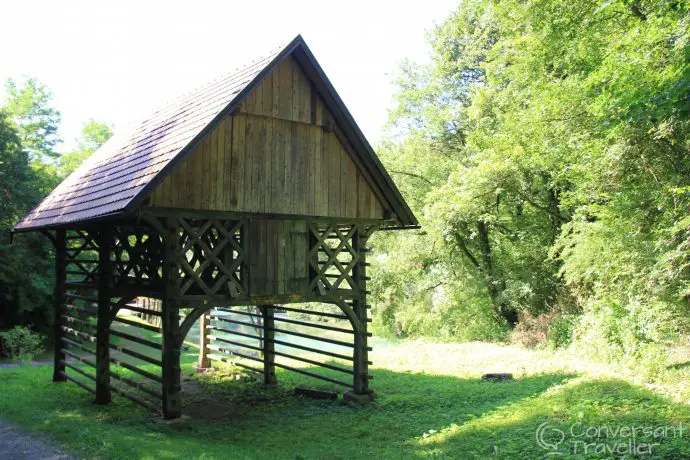
The hilltop church of St. Ana at Vidošiči
This was my personal favourite spot, and not just because of the promise of wine from the vineyards sprawling across the gently undulating slopes. The views made me think of Tuscany, although fellow travel blogger Catalina from Miss Adventures Abroad, who had joined us at Big Berry for a couple of days, assured me it was very different from Italy. And she should know as she lives in Florence!
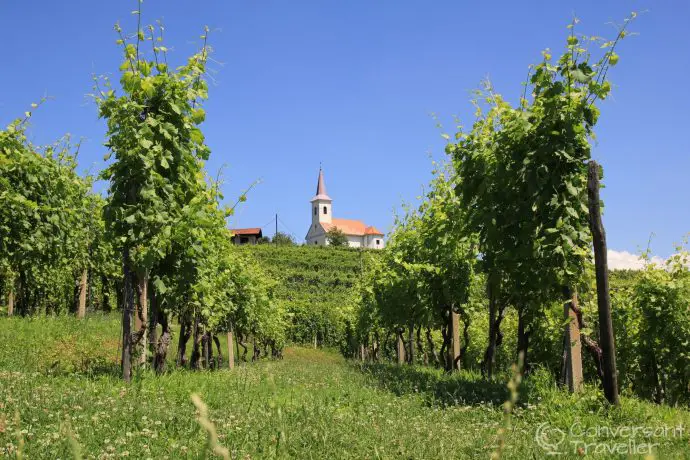
We spent half an hour playing hide and seek amongst the vines under the pretence of taking photographs, and waved to the bemused farmers ploughing their fields and tending their grapes. There was a church perched on the hilltop. If I was a church, there’s nowhere else I’d rather be!
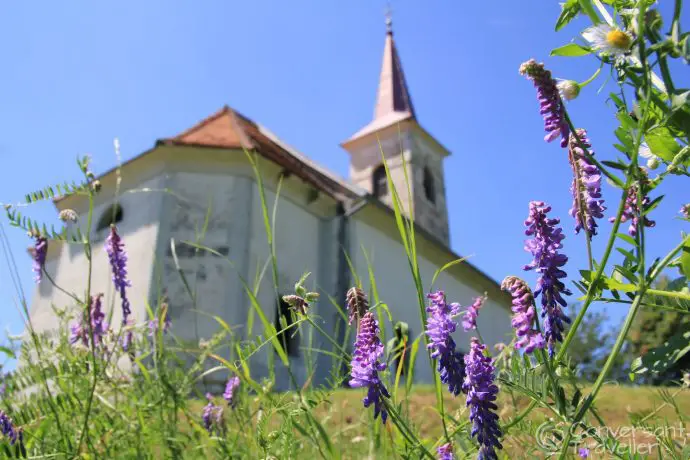
Magdalenska Stena viewpoint
No, we’re not in the middle of some tropical jungle. This is still Slovenia, the Kolpa River to be precise. Another secret scramble through the forest brought us out into the sunshine at this superb viewpoint, a few miles down stream from Big Berry. Apparently this stretch is perfect for a longer canoe journey than is possible from camp, something I wish we’d known beforehand so we could have tried it! Oh well, there will always be a next time!
There used to be a chapel on top of the Magdalenska Stena (Mary Magdeline Wall). It was destroyed during the Ottoman rule, plunging the tower bell down into the river below. Local lore suggests the bell can sometimes still be heard ringing from the depths. We didn’t hear it, but I could quite believe there was some truth in the legend.
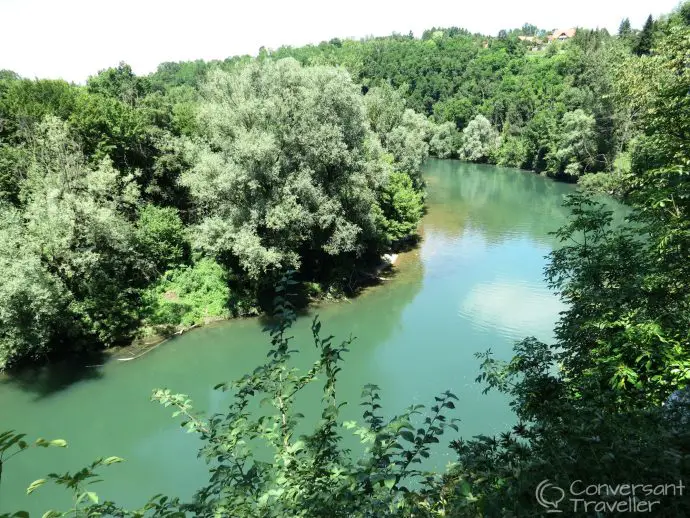
Zdenc Spring Cave
Next up was a tiny karst cave to the east of Božakovo village which was well and truly tucked away in the woods. Definitely only ever visited by those in the ‘know’. Locals used to come here to do their washing in the natural spring trickling out from beneath the rocks. Today it is used as a shrine, a cool and reflective place, perfect to come and pay your respects. Or slip on the wet rocks, walk into spider webs and squeal like a girl.
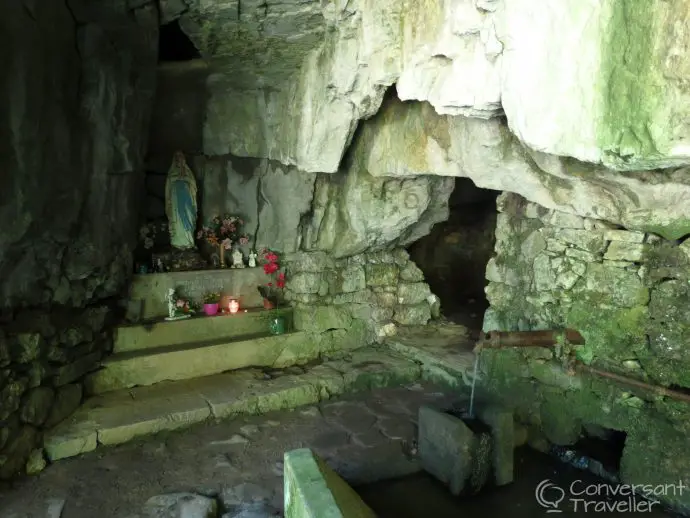
Mithraeum above Rožanec
It was time for a bit of mysticism with a short walk through the Judovje sweet chestnut forest to a hidden valley, home to an ancient woodland temple. The site is surrounded by moss covered limestone rocks, and it’s thought that this was an abandoned quarry, used for Romans gravestones in nearby Črnomelj. On one of the rocks there is a 2nd Century stone cut relief of the god Mithras, depicting a bull sacrifice. Mithraism originally came from ancient Persia, and was a religion based on the life and death cycle, as well as the conflict between good and evil.
We could really feel the history all around us. It’s the sort of place that makes the hairs prickle on the back of your neck. Today the temple has more of a pagan vibe than a Roman one, thanks to it’s enchanting light dappled woodland realm. The lichen encrusted rocks gave it a slightly sinister edge (who knows what lurks in the shadows) and after a quick exploration we beat a hasty retreat back to the car. There is always uneasiness in things we don’t fully understand.
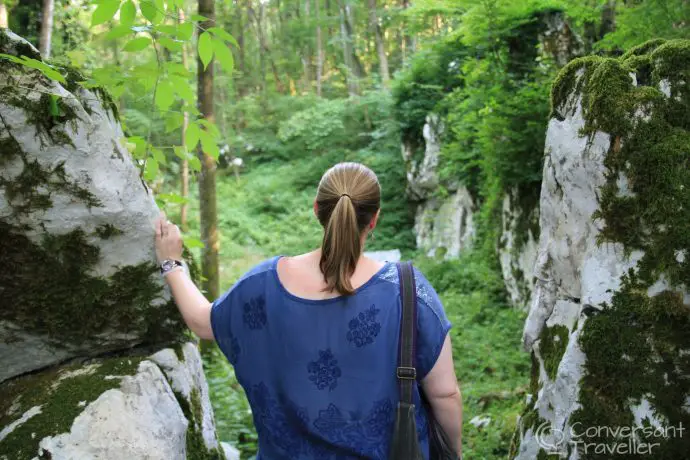
Tri Fare Pilgrimage Centre at Rosalnice
Nobody knows why there are 3 Gothic churches in the village of Rosalnice in Bela Krajina. Some postulate that they were built by the Knights Templar in the 12th Century, whilst others believe they were established during the foundation of the Bishopric of Zagreb a Century before. Whatever the reason, they are an impressive pilgrimage sight, and one you’re unlikely to come across elsewhere in the world.
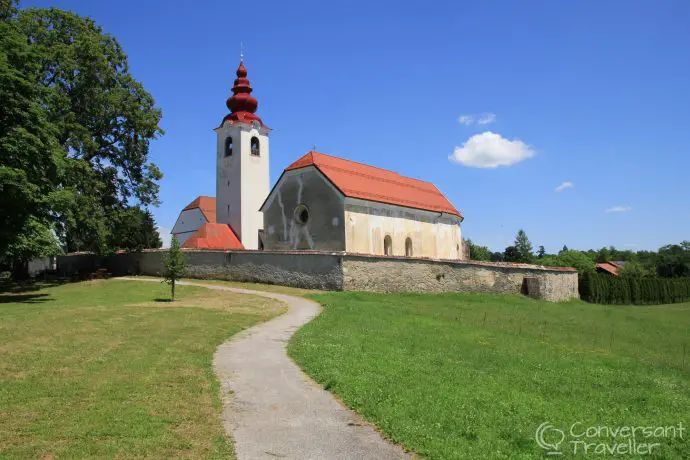
Local Producers
Čebelarstvo Veselič – Beekeeping
When we received the invitation from Big Berry to visit Slovenia I jumped on the computer and immediately began my research. I have to confess I knew nothing about the country, or even it’s precise location. Yet for all the spectacular mountain passes, glistening lakes and juicy vineyards, there was one thing that really caught my eye.
Bees.
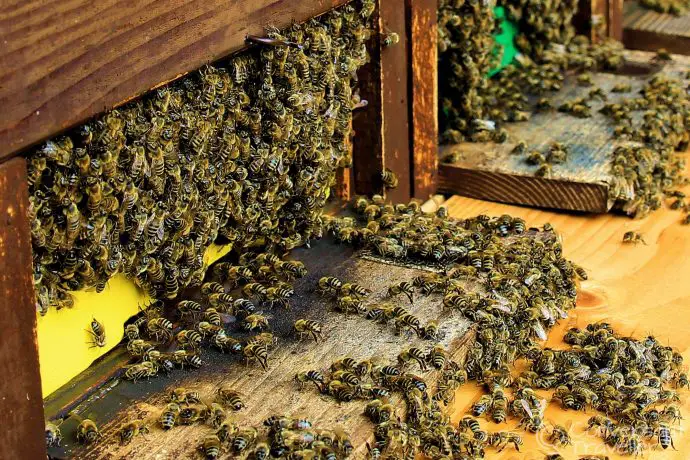
Bee tourism is a big thing in Slovenia. Everywhere you go there are hives, in gardens, forests and even on trucks parked in fields. Honey is produced by local family businesses mainly for regional consumption, but sometimes also international export. There’s one spot, Maja’s Bee Farm in Bovec (in western Slovenia) that takes bee tourism even further, offering hive aromatherapy to visitors. Not really fancying sitting in a hive for an hour we were keen to see beekeeping in action and headed to Čebelarstvo Veselič in Gorjanci near Metlika. A modest yet thriving business with over 300 hives that has been in the family for 4 generations.
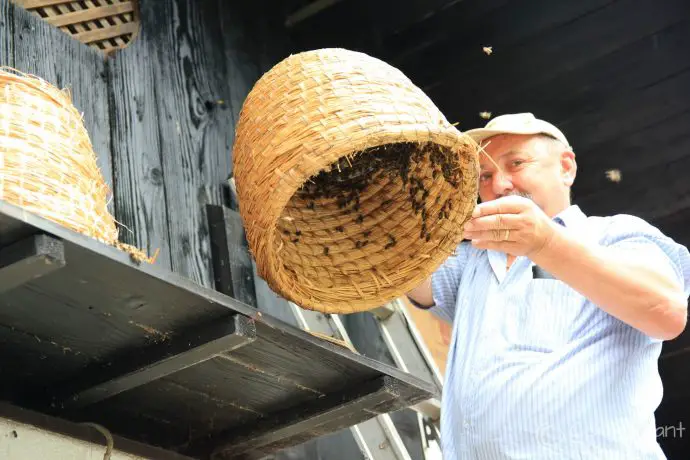
We were welcomed with the traditional pogača bread, before knocking back some honey schnapps and dribbling teaspoonfulls of the golden nectar over our tongues. Čebelarstvo Veselič produces several varieties of honey, each made with pollen harvested from different plants (including acacia, linden, chestnut and fir tree), giving very unique tastes. They also produce beeswax candles, honey schnapps, royal jelly and even honey gingerbread.
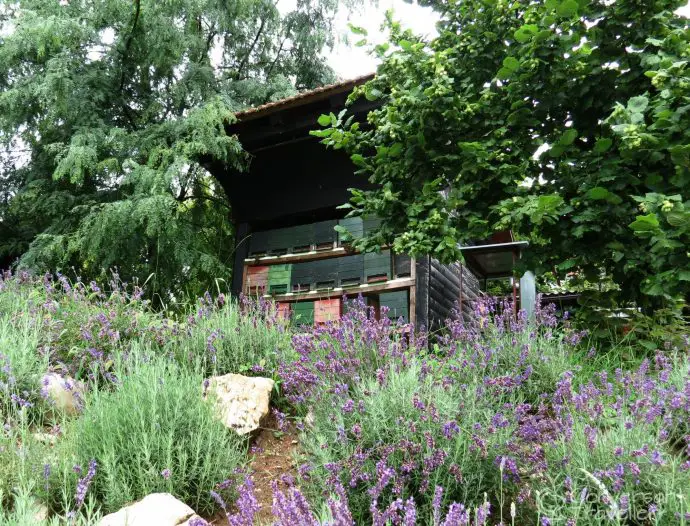
Then came the tour of the gardens and hives, with suitable murmurs of admiration at the swathes of lavender lining the pathways. Hubbie was in purple paradise photographing the bees. It was at this point that I stupidly asked if honey is produced all year. Vit diplomatically pointed out the small matter of bees requiring flower pollen for this to happen. Not so many flowers around in winter! Hubbie understandably pretended I wasn’t with him.
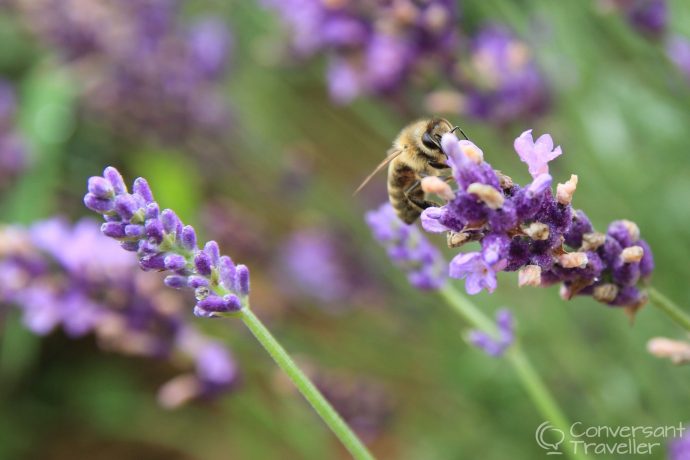
Oljarna Pečarič – oil tasting
I love dipping oils. Especially with a bit of artisan bread, and we often do this at home with some good old olive oil. Visiting Oljarna Pečarič made me realise however that olive oil is just the tip of the iceberg. It seems you can make oil out of just about anything, and there must have been at least 20 laid out here for us to try. As well as being tasty, they all had medicinal properties. By the time each had been explained to us, I reckoned with all of these, we wouldn’t ever need a doctor! Some aided digestion and heart complaints whilst others helped with arthritis and even cancer. The cannabis and poppy oils were perhaps the most unusual, but it was the pumpkin one that hubbie and I agreed tasted best. One more purchase for our poor bulging suitcases!
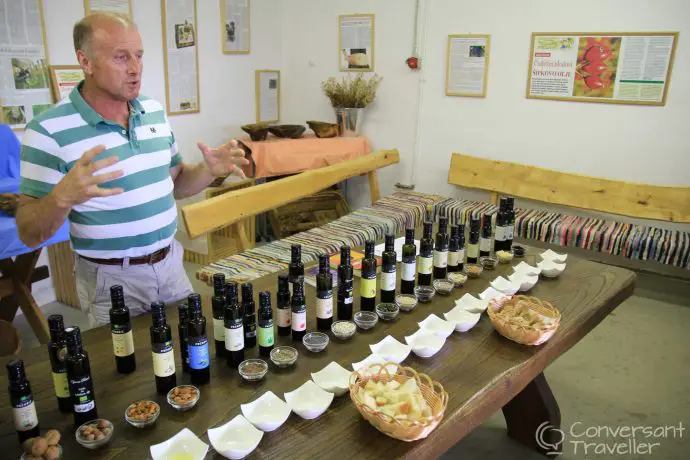
Berryshka – liqueur and chocolate tasting
If I had a business it would involve chocolate. Berryshka in Bela Krajina goes one better and adds home made liqueurs to their family business. Berryshka is an impressive distillery and chocolate factory nestled at the foot of the ancient Kočevski Rog forest, next to a handy natural spring.
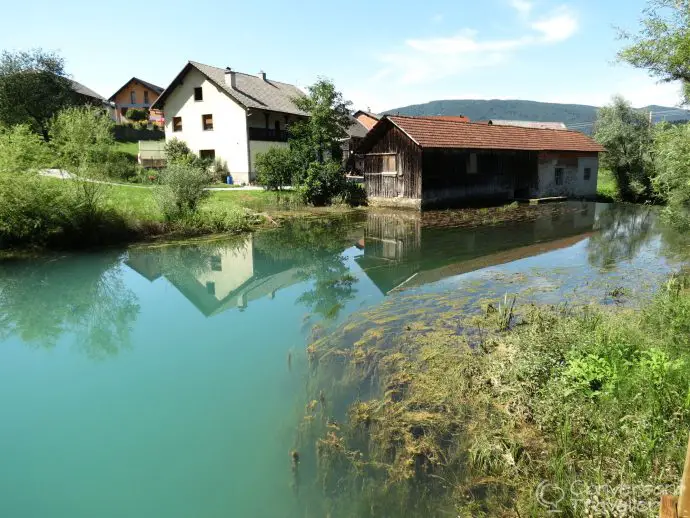
The liqueurs are flavoured by natural fruit from the region, such as juniper and blackberry, and some of them are even infused into the chocolates. Needless to say we had to try several before deciding our favourites.
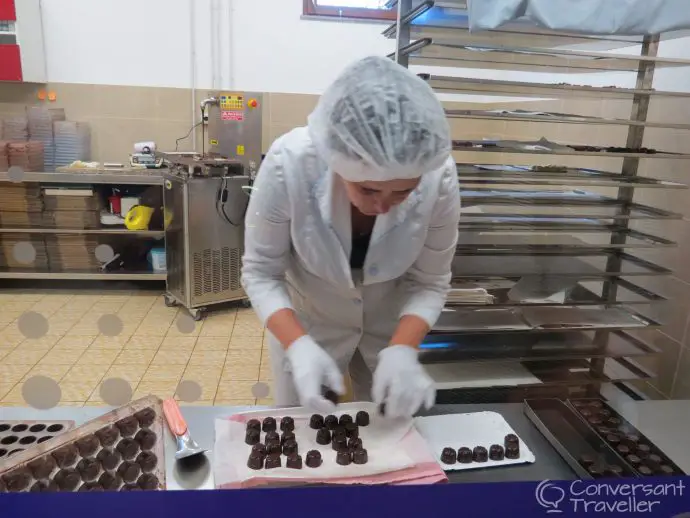
Bibi Turizem – Pogača bread making
Everywhere we went in Slovenia we were offered the traditional pogača bread. It’s a round leavened bread brushed with egg and sprinkled with salt and cumin seeds, and unbelievably tasty. We visited Bernada at Bibi Turizem in Črnomelj to have a go at making our own pogača, and have to say it turned out pretty well. Bibi also makes a lot of products using local lavender, including the rather divine lavender lemonade, really refreshing on a hot summer’s day.
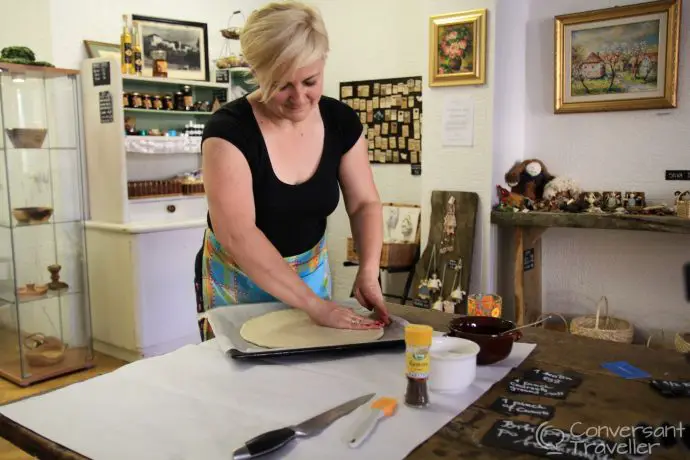
Malnarič Winery – wine tasting
I had no idea Slovenia had so many vineyards. I’ve never tried Slovenian wine, because it never makes it to our UK supermarket shelves, but once realising it was one of the main products of Bela Krajina I just had to taste it. Vit took us to the charming Malnarič Winery in Semič, one of the the oldest in the region, and owned for generations by the same family. We had a fun half hour down in the cellars trying a few glasses. Unlike other wine tastings we’ve experienced, here the glasses were filled rather generously, the owner clearly being proud of his produce. Normally a red wine drinker, I found I actually rather enjoyed the white, with both wines feeling a lot lighter in volume than what we’re used to. Which means we could drink more. Result!
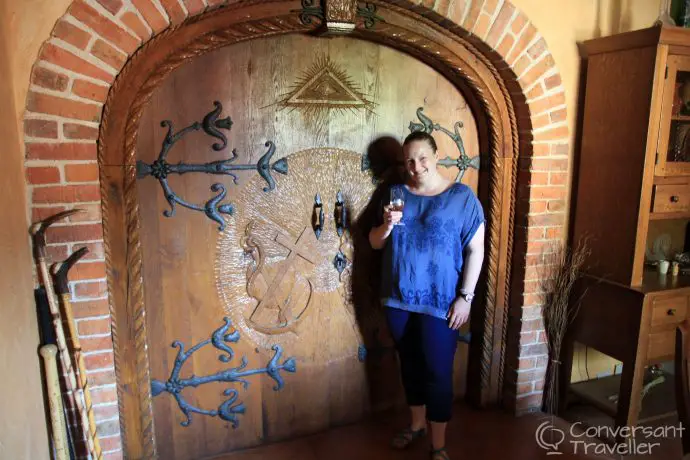
Kmetija Štrucelj – visiting the dairy farm
One of the best things about breakfast at Big Berry was the abundance and variety of yoghurt, including our personal favourite, stracciatella, which I think had chocolate flakes in it! We made a quick stop at Kmetija Štrucelj, the local farm, to say hello to the cows who kindly provided our dairy delights. Although hubbie and I live in a rural area and see cows every day, it was still fascinating to see the milking process and follow the food trail from source to table.
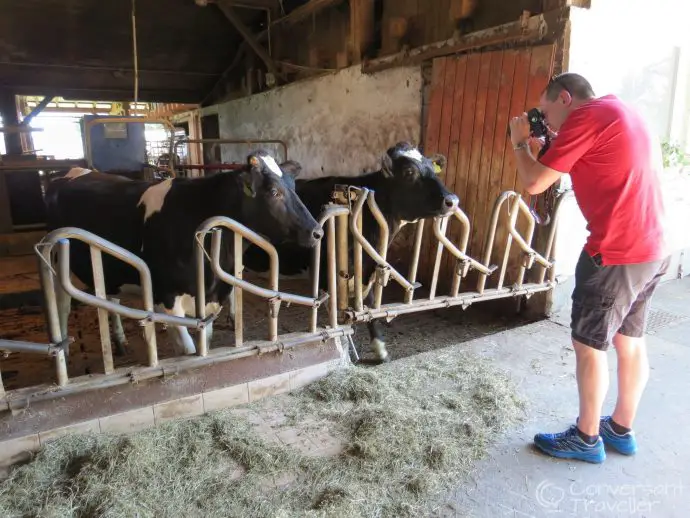
Eating Out
Bela Krajina is still a delightfully sleepy backwater where tourism is concerned. This means you won’t find restaurants catering to mass tour groups or signs proudly displaying ‘tourist menus’. In our mind this is a good thing, especially if you want to experience the area as a local. Indeed in several places proprietors assumed we were Slovenian and it felt refreshing not to be singled out immediately as an outsider.
So whilst the meals perhaps weren’t the culinary adventure we’d expected, they were good and hearty. And to be honest, sometimes it’s nice just to eat what you want rather than feeling the pressure to try new and unusual dishes all the time. We had spent the day tasting local foods after all!
Hubbie loved his calzone at Pri Starem Pildu Pizzeria in Metlika, although I still don’t quite know how he managed to finish it, not even in Italy have we seen one so huge!
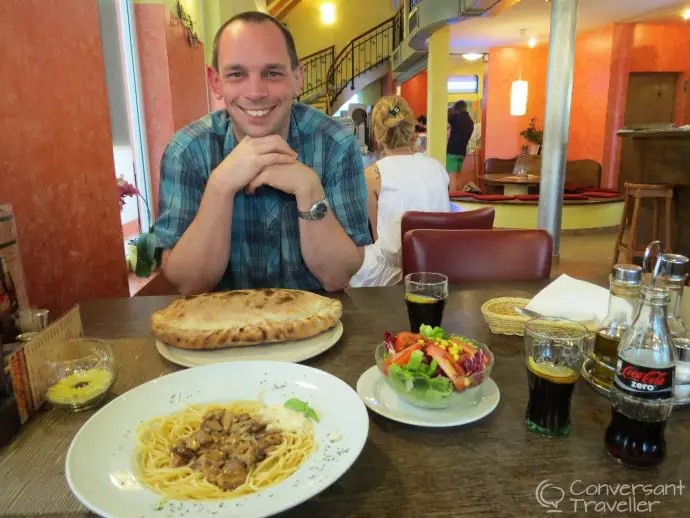
My personal favourite was sitting eating a rather delicious pork stir fry on the leafy balcony of Gostilna Muller in Črnomelj with Vit and Catalina. Often we prefer eating alone, but sometimes a bit of good company over a tasty lunch are just the ticket.
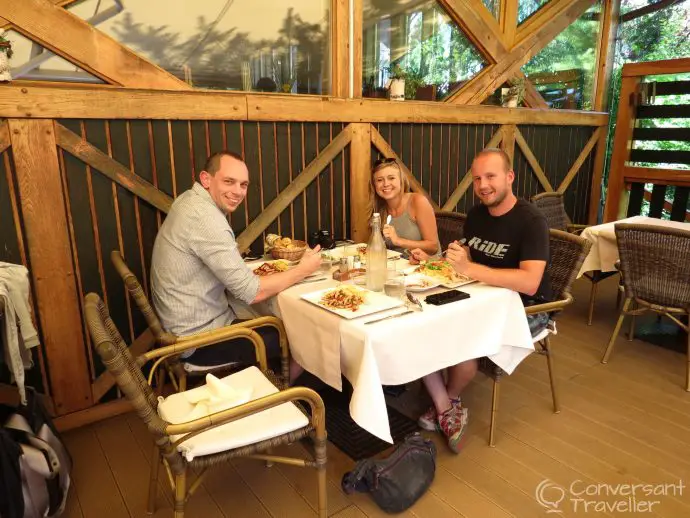
We found Slovenians in Bela Krajina to be incredibly friendly and welcoming, as we discovered at Gostišče Veselič where Vit took us for lunch one day. We were received as friends and left feeling almost like family, not something we’ve experienced very often at restaurants on our travels.
What we loved about Bela Krajina
Hidden gems are the order of the day in Bela Krajina. There’s no single top sight, but instead several little pockets of perfection tucked away in the most unlikely of places. We’d never have found them without our wonderful Big Berry guide Vit. Here it’s all about making the most of local knowledge and enjoying spots that very few tourists have ever seen! As such, the whole experience felt rather exclusive. There was no risk of running into a line of tour coaches here.
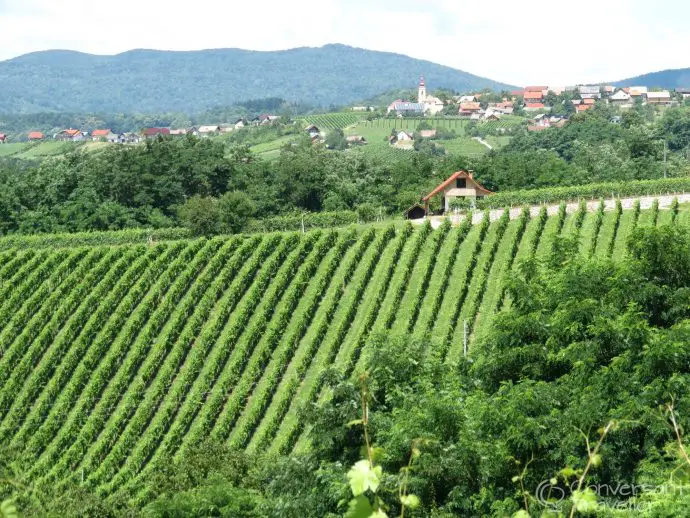
What wasn’t so great
Some of the local producers we visited are very new to the tourist game. Whilst this has it’s charms, it also means that some of the experiences were a little lacking in visitor participation. Yet these tours are still in their infancy, and suppliers and guests alike are still learning how to get the best from each other. I’m sure that when the Big Berry retreat opens for business in 2017 these little observations will have been ironed out. The support that exists between the producers and the community is like none we’ve seen before and if they can’t figure this out, no-one can!
The Verdict
There’s virtually no tourist infrastructure here in the region, and whilst some may feel it lacking in actual activities, for others (us included) this is the very essence of what Bela Krajina is all about. You don’t come here for big attractions and tours. You come here to experience rural life as a local, and to appreciate the natural beauty of this unspoiled hidden corner of Slovenia.
If this isn’t what you’re looking for, I’d advise you to stay in Bled!
Thanks to Big Berry for hosting us during our stay, and for showing us the sights of Bela Krajina. As always, opinions are our own, and we only accept sponsored stays at places we’d have been happy to pay for ourselves.
Found this article useful? Pin it for later…
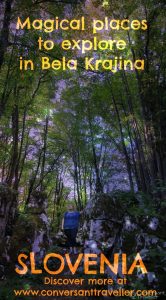

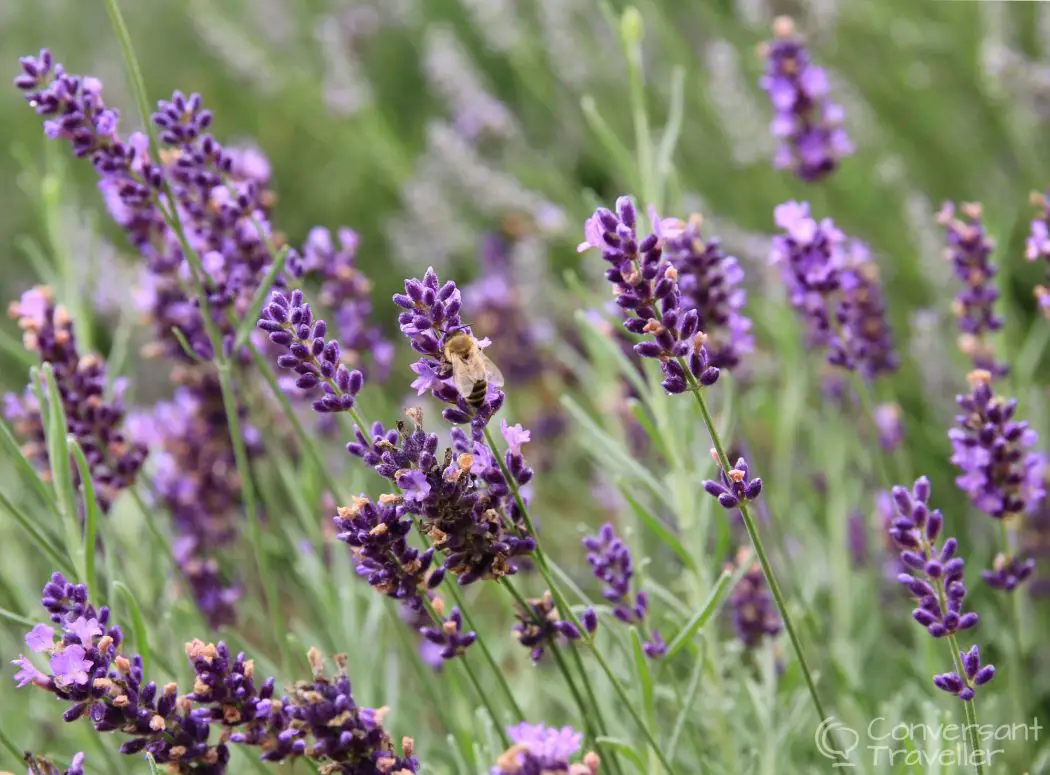
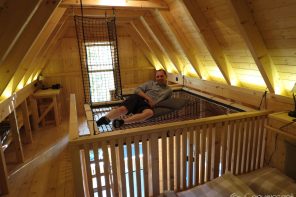
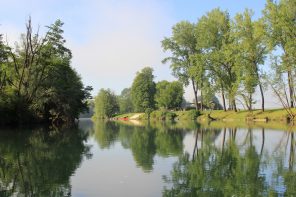
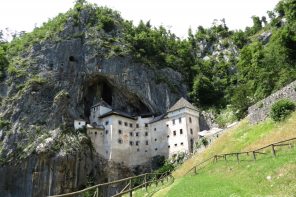

Wow Heather you saw A LOT of Bela Krajina! I only had a couple of days and managed to go hiking and visit the olive oils producer that you saw. So exciting to see beekeeping is going on too. I’d love to go to the source of the River Kolpa and in that cave too! Will have to go back <3
Yeah, didn’t realise there was quite so much to see and do! Still got some of that oil (pumpkin, delicious on salad!), you’ll definitely have to visit the beekeeper when you next go!
This sounds like a literal dream come true. Gorgeous photos of what sounds like a perfect place to escape and slip into another culture for a while.
Definitely somewhere to go to forget about the stresses of daily life!